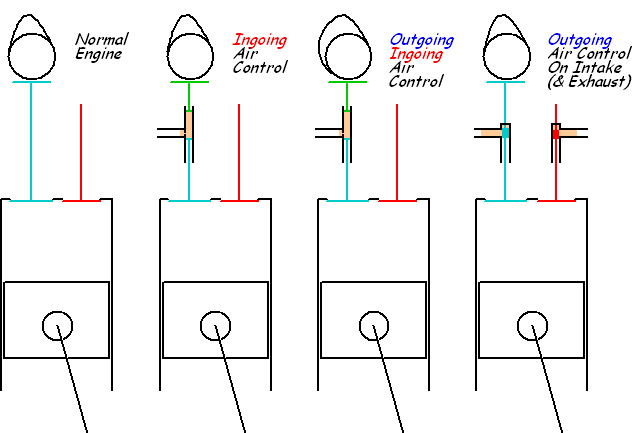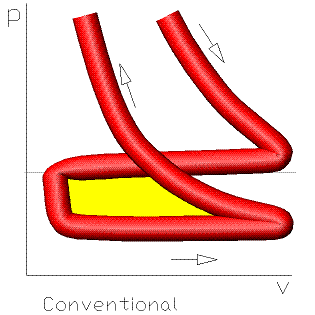Wouldn't the outgoing version which needs to do both shut and seal more rapidly in accuracy become more critical in engineering it to work perfectly? To seal first then release later seems easier than to build pressure then seal it later on such circumstances, I'm just contemplating.

No.
Think of an engine with the PatAir system on its cylinder head.
To shift from the Ingoing Air Control to the Outgoing Air Control, and vice versa, all you need is to phase/shift accurately the pulse from the Electronic Control Unit (ECU) to the solenoid valve.
Imagine, for instance, the PatAir running according the Ingoing-Air-Control and closing the intake valve at 45 deg after TDC (suction cycle), then imagine the same PatAir running according the Outgoing-Air-Control and closing the intake valve at 45 degrees before TDC (compression cycle).
For the hydraulic system and for the intake-valve and for the “shut and seal” the Outgoing Air Control and the Ingoing Air Control are exactly the same. Also the PatAir Intake-Air-Control and the Fiat MultiAir-Control are the same.
As for the PattAir, take a better look at the stereoscopic Bucket-Lifter animation: The oil escapes from the “oil chamber” (red) until the “oil plunger” (blue) covers the lower hole of the “oil chamber”. Then the intake-valve disengages from the cam and is kept open until the solenoid valve opens. The solenoid-valve needs to open only one time per two crank rotations. There is nothing that needs a more rapid “shut and seal” or a better accuracy.
The pure mechanical opening of the intake valves of the PattAir make it suitable for high revving – top power applications.
By the way, what makes the difference in these Electro-Hydraulic systems (MultiAir, PatAir and PattAir) is that they are based on digital control.
To phase/shift the pulse to the solenoid valve for a few millionths of a second (at 9000rpm, for instance, each degree of the crankshaft corresponds to 18.5 millionths of a second) is a quite easy task for an ECU clocked near, or above, 1GHz.
Manousos













